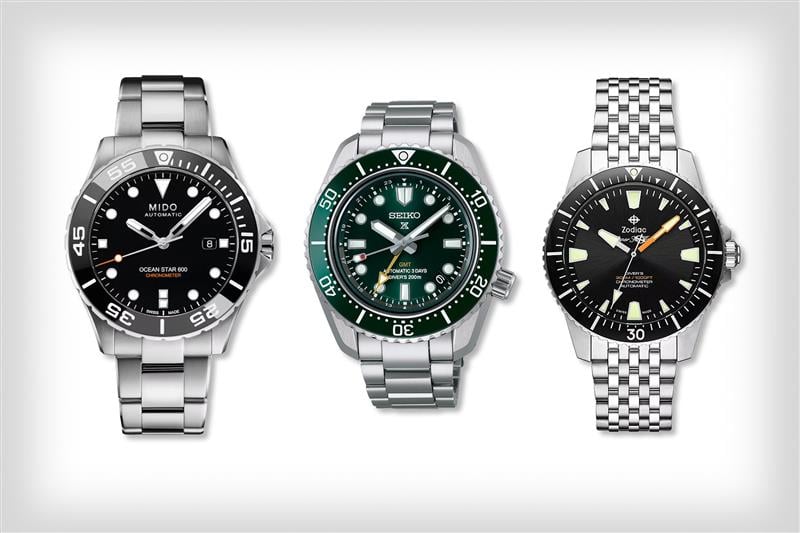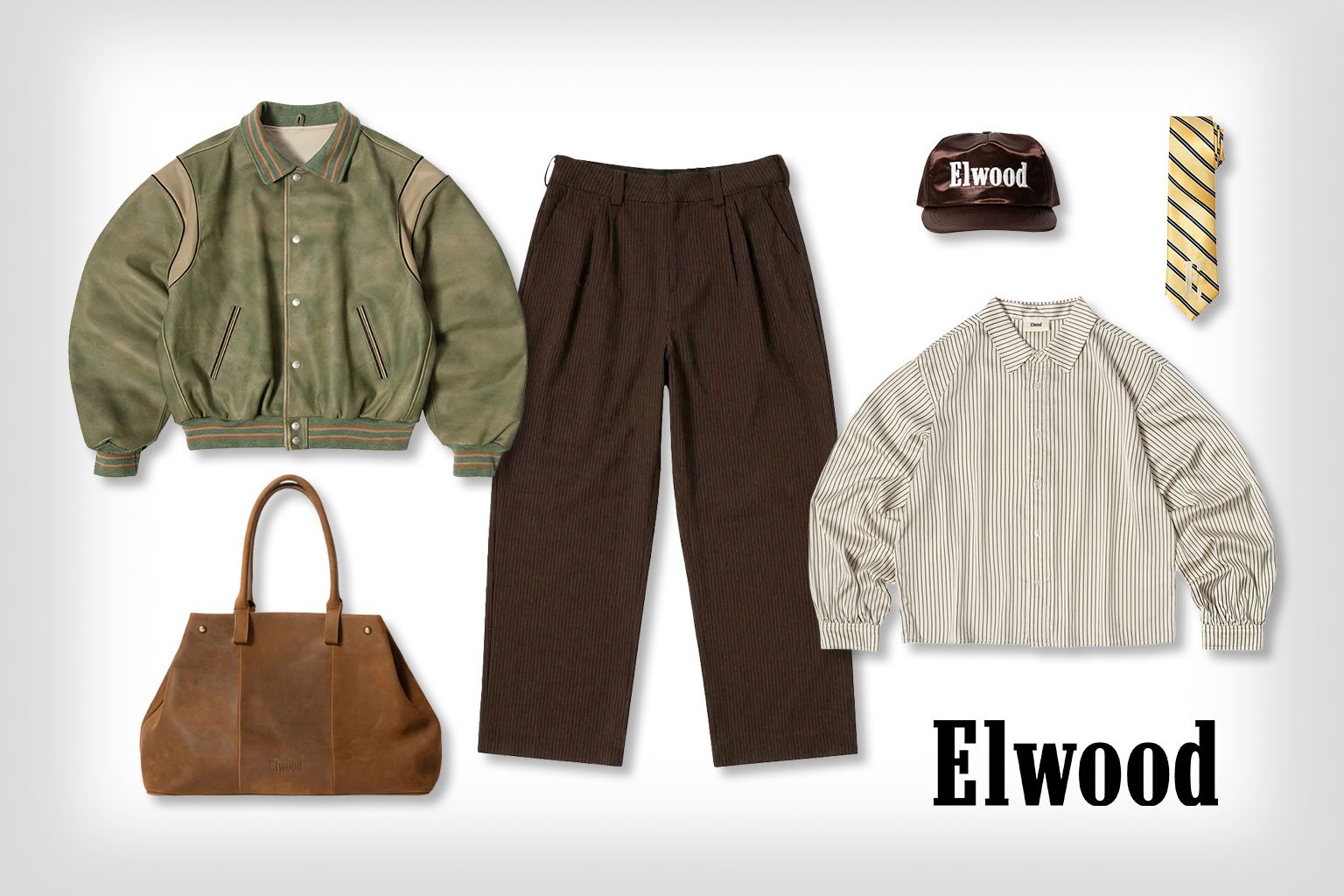The Best Sex of Your Life: The Truth From Renowned Sexologist Caitlin V
Dec 31, 2025The Best Fitness Watches You Can Buy In 2023
- Oct 31, 2023
- 0 Comments
572
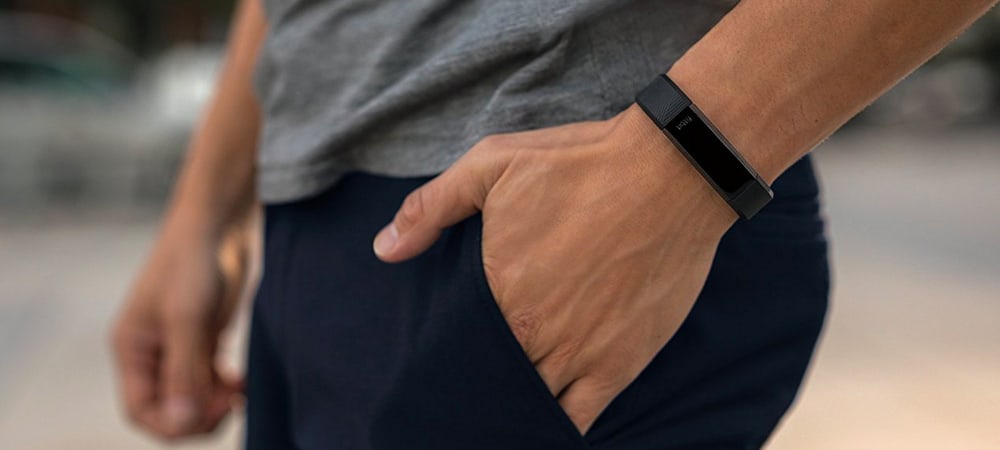
Few things are tracked as fastidiously as fitness. From beats-per-minute to miles-per-minute, winning, it seems, is all in metrics these days. But you needn’t be a mathlete to compete with the fitness hipsters. Thanks to technological leaps and fashion bounds, it’s now easy to muscle in on a numerical advantage yourself.
And thank the tech gods for that. Gone is that weird guy in the gym with a heart rate monitor strapped to his chest like some sort of disco Terminator. Now all you need to view almost every marker of exertion is a cursory glance at the wrist. But the question that boggles runners and gym bros alike remains: what to watch out for when buying a fitness watch?
Simple, says Kerry McCarthy, gear editor at Runner’s World magazine. There are some fundamental requirements that make for a good fitness timepiece; you need those and nothing else. Here’s his list of essential tracking metrics, with tips on putting the stats to use.
The Stats You Need To Know
Stride Length
“Mo Farah gobbles up around 2m of ground with every stride thanks to his long legs and super-flexible hips. Yours is likely to be less than half of that, but you should be aiming for between 1-1.3m with each stride. Shorter and it means you’re scuttling (and thus wasting energy); longer and it means unless you’re also a yogi you’re probably over-reaching, which can lead to injury.”
Cadence
“Here’s one elite habit you can aspire to. All the top runners take around 180 strides per minutes, which is seen as optimal. If you’ve never paid any attention to it, it’s more likely yours is currently around 160. Work on turning your feet over a little quicker to make yourself the most efficient runner you can be.”
Heart Rate
“There are numerous online algorithms to help you work out your own target maximum heart rate but the old formula of 220 minus your age is still a more than adequate guide for beginners. So if you’re 45 years old your maximum heart rate should be 175. And that’s when you’re eyeballs out. For easy to steady runs you should be somewhere around 50-60 percent of your maximum.”
Pace vs Average Pace
“If you struggle to keep each kilometer consistent, switch your watch from ‘average pace’ (which smooths out the spikes and troughs and can give a false sense of control) to ‘current pace’. This can then be calibrated to give a reading once every second on most devices, which means if you’re all over the place like Phoebe from Friends but have never noticed, you’ll now see the pace reading veering around wildly as you do. Work on calming this down.”
Which Watch?
Now you know what a tracker can do for you, it’s time to upgrade your timepiece. Reticence here is understandable, of course: the decision presents something of a sartorial quandary to the fashion cognoscenti.
Do you go all in, like a devil-may-care maverick, throw your watch to the wind and buy a utilitarian, 100 percent fitness-focused product to let the world know you might bash out some burpees at any moment? Or should you stick to your traditionalist sensibilities and try one of the established watch brands’ forays into fitness fashion?
Luckily, it’s fine to do both depending on your goals. Fashion and fitness are meeting in the middle. Many of the proper trackers now look good enough to work within most outfits – black tie aside – and even the most Swiss of Swiss watchmakers are adding tracking technology weighty enough to challenge Fitbit to a foot race.
The Best Brands For Dedicated Fitness Watches
Fitbit
Fitbit has been doing its midrange product thing for a while and as a result has honed its trackers into excellent, affordable watches that are ideal for the everyman. While it’s unlikely you’ll see one on an elite athlete, that doesn’t mean a Fitbit won’t keep pace with your designs on elite fitness.
The recent addition of heart-rate monitoring tech makes the brand’s Alta HR a solid contender for your wrist. Packing it into such a slim chassis – the slimmest around, they claim – means it’s an unobtrusive accessory, especially given the mostly muted color options.
On a seven-day battery span, you can expect feedback on calories burned, heart rate, distance and steps covered plus how much activity you’ve undergone that day. Fitbit devices also report back on your sleep, if you’re into that kind of thing.
Buy Now
Polar
Polar has been making heart-rate monitors since 1977, long before your mum got interested in getting her 10,000 steps a day. Its innovative products are used by elite coaches to track the performance of pros in practically every sport imaginable so it’s more than capable of helping you track down a new PB.
While the company does entry-level units, its premium trackers are the reason it’s successful. Think sport-specific training schedules, recovery advice and built-in fitness tests.
Add to that world-beating GPS technology, which means higher accuracy and no bothering with your phone to track distances and routes. But if you do pair it with the app on your phone, you can use Polar’s customized training plans for middle- to long-distance running, which come via instructions on your watch.
You also get the standard features you’d want from a smartwatch: alerts for calls, messages and even social media notifications. So if you often enter race events and want to be able to stay up to date with your messages during your training, this is your device.
Buy Now
Suunto Spartan Ultra
Now things get serious. Serious tracking. Serious functionality. Serious price. Suunto has been making instruments designed for outdoor performance since the thirties. The firm uses a one-second GPS fix rate, which makes for the most accurate tracking around.
The Suunto Spartan range is up there with the most expensive, but with good reason. The sheer magnitude of tracking options makes it the go-to choice for weekend warriors and serious athletes alike.
There’s a nod to the aesthete as well. The Ultra, protected by its titanium bezel, comes in a range of colors – or you can customize it yourself – and has a color touchscreen, which is why it’s picked up design trophies to match all its outdoor gear awards. The USP of this watch is the multi-faceted discipline functions – it packs 80 different sport modes with metrics specific to each.
With that, you can store and beat your PBs, map and discover new routes, find other people’s well-trodden paths using heatmaps and then let the watch’s built-in navigation system guide you wherever you’re going.
Buy Now
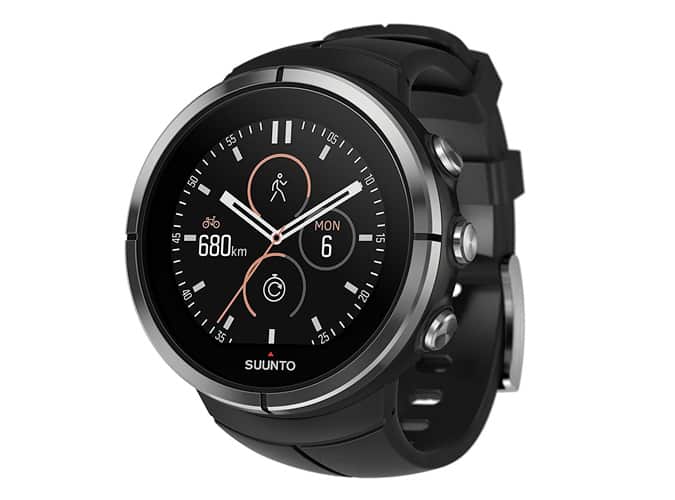
Samsung
One of the few areas where Samsung has given Apple a real run for its money, the Korean tech giant’s smartwatches have gone from strength to strength with its Tizen operating system – and, most importantly, created a model for almost every need, from hardcore fitness fanatics to casual smartwatch wearers.
The flagship model is still the Gear S3, which tracks anything you could possibly want tracking – acceleration, heart rate, altitude, speed – though its Gear Fit 2, which also has built-in GPS, will more than suffice for guys who just want enough data to keep them motivated.
Buy Now

Garmin
Though Garmin produces smartwatch trackers for all sporty types – from beginners to serious athletes – this is a brand for runners, cyclists and swimmers who know their stuff. It has influenced other smartwatch makers with its VO2 Max feature, which measures oxygen consumed per minute per kilo of bodyweight (sounds complicated but an it’s an excellent way of measuring athletic performance).
Garmin’s standard bearer, the Vivoactive 3, is also one of the very best models around, and especially good for heart-rate monitoring and its GPS. Between the Vivoactive and other watches, Garmin caters for almost every sporting activity, including skiing, rowing, triathlons and even golf.
Buy Now
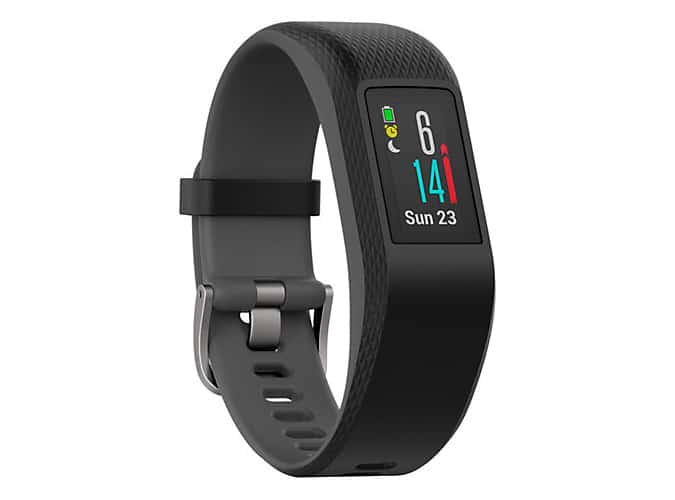
Apple
Apple smartwatches aren’t solely dedicated to fitness – fitness tracking is one of several features – but they do work for anyone who is dedicated to getting fit. The Apple Watch, now on Series 3, splits its fitness features across two apps: the Activity app for everyday movement and the Workout app for, well, working out.
As with most Apple products, it’s very user-friendly. The Activity app gives a basic quota of movement, standing and calories to burn – various ways to get you off your backside, in other words – and the Workout app measures stats for duration of exercise, distance and pace in real-time.
Buy Now
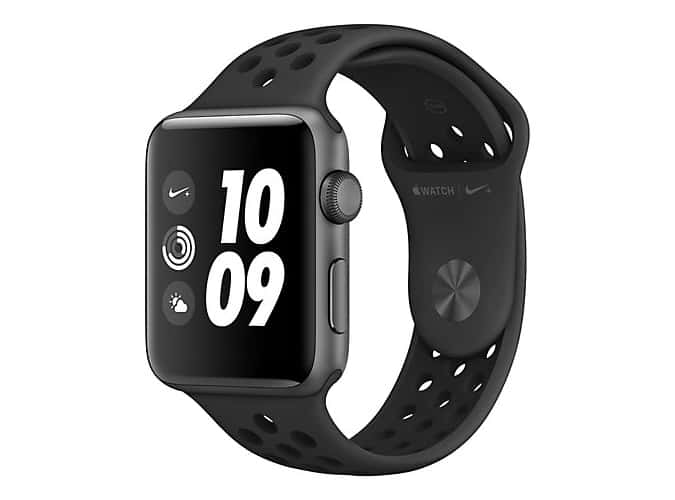
The Best Brands For Fashion-Fitness Watches
Tissot
If you want to invest in a solid timepiece without breaking the bank, Tissot is always a safe entry point. With all the trappings of watchmaking craftsmanship, the brand’s T Sport range adds athletic functionality to otherwise classic-looking timepieces.
The PRC 200 is an update on the successful Tradition Chronograph. Where the latter looks much more like a fashion watch with a chronograph built in, the former has a much more sporty aspect when viewed closely, but with an understated enough design to work with the sharpest of suits.
This choice offers a watch for all occasions. Be that a work function or when putting the Swiss reliability to the test with its 60-second, 30-minute and 1/10 of a second chronograph, complete with a split function if you need it.
Buy Now
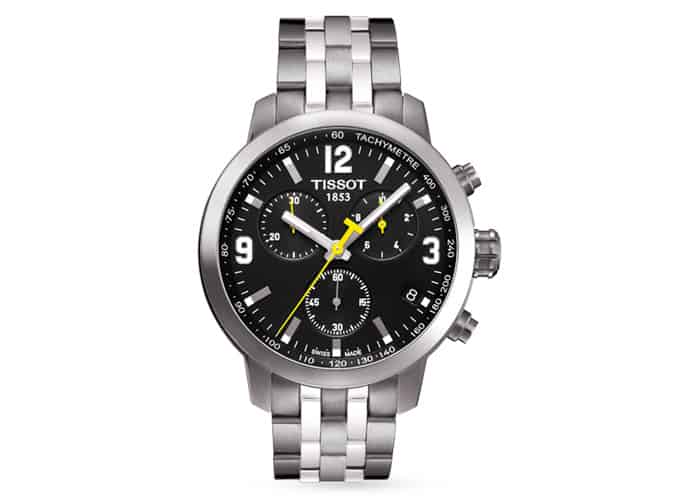
Mondaine Helvetica 1 Smartwatch
This is ostensibly just a regular watch, but with brains running in the background. The minimalist display offers a what looks like a traditional chronograph subdial, and no one would know it was packing smart features were it not for the words ‘Smart Swiss Made’ smack
The functionality comes in the form of an app. The Helvetica 1 may be 90 percent watch, but it’s no less smart for it. Connect it to the app and use the buttons on the watch to begin activity tracking, sleep tracking and to show your activity progress.
In the app itself, you’ll see breakdowns of your individual profile and progress towards your sleep and activity goals. It would never stand toe-to-toe with something like a Suunto Spartan, but if you’re looking for a snazzy timepiece with some additional features, you won’t find better.
Buy Now

Tag Heuer Connected
Essentially the caped crusader of watches: the Tag Heuer Connected is both as sauve and inconspicuous as Bruce Wayne and as action-ready and gadget-packed as Batman. And no other watch hides its heroic alter ego quite so well – you can customize yours to look exactly like a regular watch and the OLED touch screen can even be set to display the classic, analog appearance you’d expect of a Tag.
And on that customization, go modular and you can either have the watch strapped with metal, leather or, if you’re serious about putting its fitness functionalities to the test, rubber (Batman would approve, too). As for the inner workings, Tag is a proper contender thanks to its Intel processor, making it far faster than your average luxury smartwatch.
When you’re on the go, it packs an accelerometer, gyroscope, tilt detector and haptics engine, as well as an in-built GPS to track your activity. There’s even contactless payment functionality, should you need to grab a post-workout feed en route home. Plus seeing Google Maps on your wrist via such a high-quality screen feels like something from the future.
Buy Now
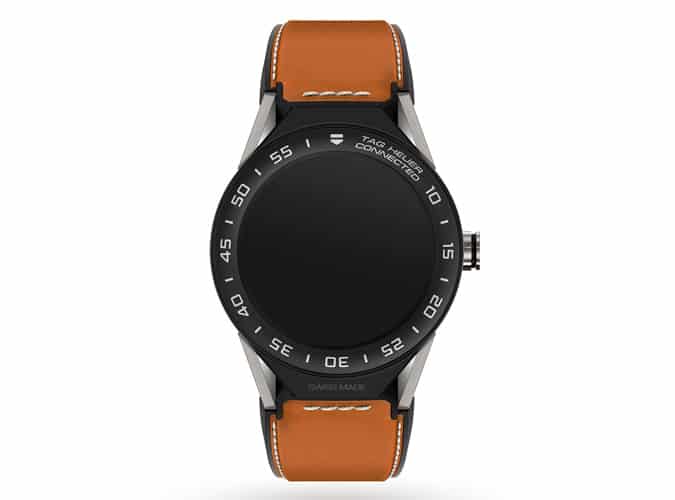
Skagen
Smart wearables from this lesser-known Danish watchmaker are among the most aesthetically-pleasing fitness models out there. In fact, you’d be forgiven for thinking its hybrid smartwatches were just attractive-looking standard timepieces.
In truth, they have limited activity tracking features – just steps, distance and calories – while the fully smart Falster watch looks more techy with its digital screen, and has Google Fit already built in, so you can track fitness within various sporting activities.
But without the GPS and heart-rate monitors that make other brands’ smartwatches such vital exercise tools, the Skagen models are best for casual (good-looking) exercise.
Buy Now
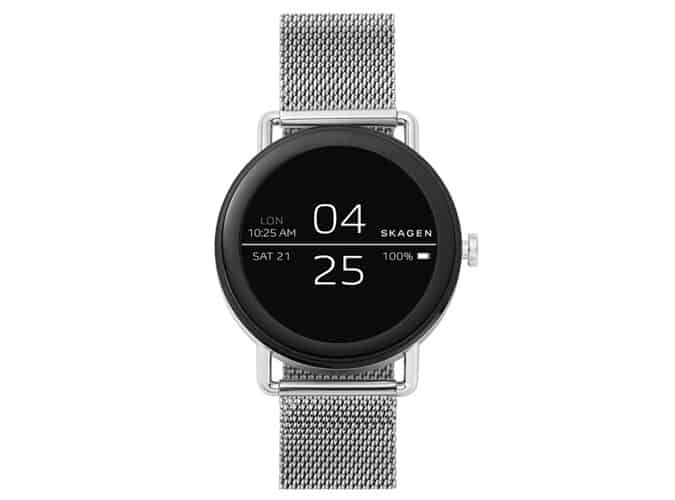
Montblanc
The classic German watchmaker has entered the luxury smartwatch game, debuting its aptly named Summit in 2017 (though the brand also released a smart e-strap in 2015 – an interchangeable strap that can pair with phones and track activities).
The idea behind Summit is a high-end smartwatch – its design harks back to a classic, vintage look that makes it feel like an old-school mechanical watch on your wrist – but with some trendsetting features, including the Runtastic heart-monitoring app. It also helps you monitor fitness goals, with daily progress measured by a mountain-shaped tracker.
Buy Now
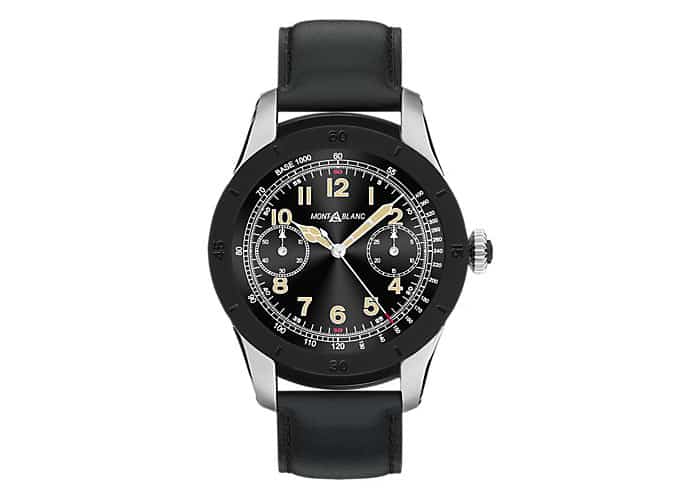
Swatch
It’s one of the biggest watch brands in the world, but Swatch didn’t want to follow everyone else with its first fitness wearable. Instead, it created the colorful Touch Zero One, which is made with specific features for measuring activity in volleyball… yes, that’s right, volleyball (the Swiss watch brand does sponsor volleyball, so it’s not entirely left field).
It also measures steps, calories, distance and even, erm, claps. It later followed up with the Touch Zero Two. Credit goes to Swatch for doing its own thing, but this isn’t necessarily the smartwatch series for you if you’re thinking about your next Iron Man.
Buy Now
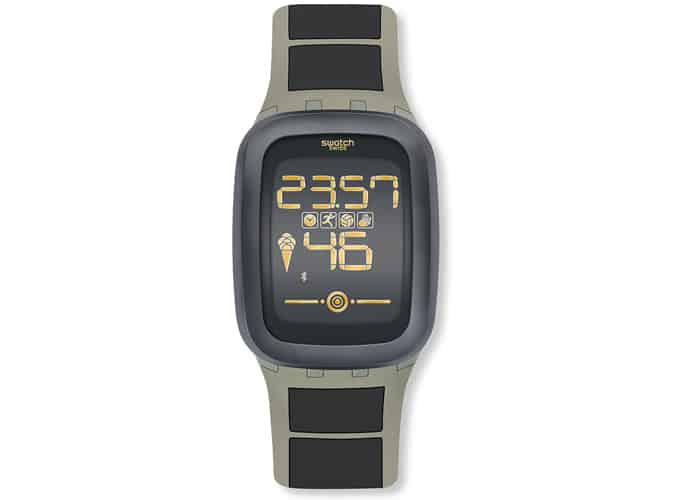
Publisher: Source link



